Daytona dreaming – the sweet 60th

IMAGINE for a moment you could cut a line vertically through the grandstands of the Melbourne Cricket Ground.
Then, imagine splitting the ground apart at the line you’ve just made, opening the almost perfect circular ground up in the same way you prize the sections of an Orange open with your thumbs.
Where the MCG was once a circle, it is now an almost-straight line of grandstands and where once it would sit in its serene Yarra Park surrounds now it stretches, in a gentle parabola, more than 1.2 kilometres long to sit neatly between Federation Square and Punt Road.
That’s how big the main grandstand at Daytona’s International Speedway is.
It’s an accurate comparison for both share the same rather immense, imposing scale and remarkably an almost identical 101,500 all-seated capacity.
Both exist outside the realms of what continues to be considered normal for a sporting facility of its type and both draw your eye from some distance away: In the same way that the Colosseum-style nature of the ‘G is visible across Melbourne’s CBD, the remarkable scope of the DIS stands are visible from the moment you exit the nearby interstate or amble in the traffic along International Speedway Boulevard from the Beach itself.
But then again, Daytona itself exists outside of what can be considered normalcy for motorsport, too.
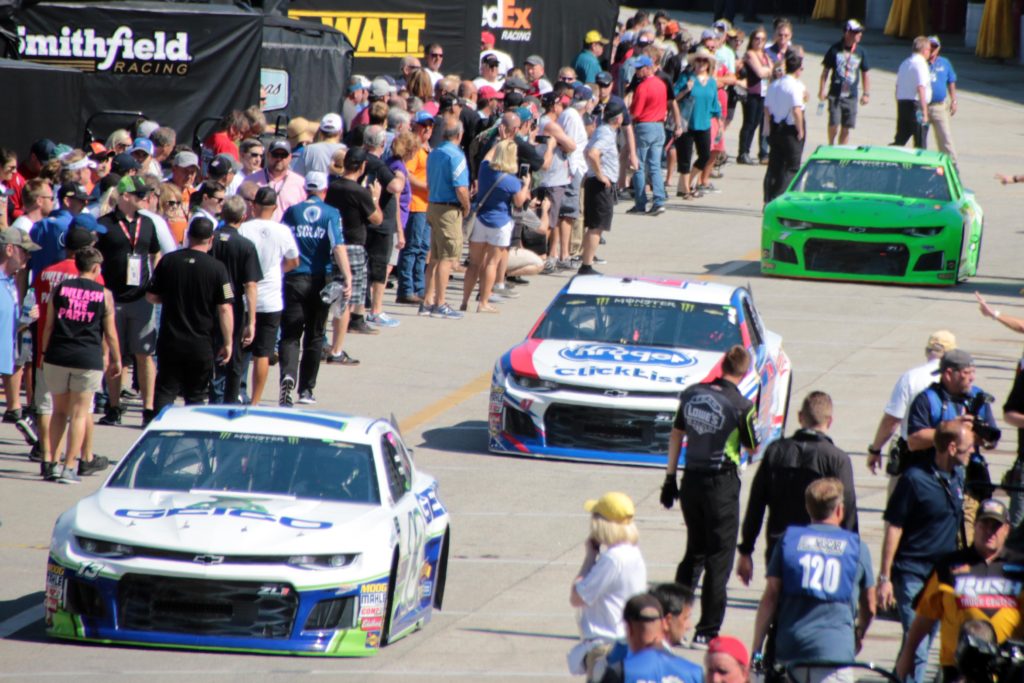
IN 2018, Team TRT – Craill and Walker, at least – went on the Great American Trip to see the Great American Race. Suffice to say, if left an impression. Here’s Craill’s initial thoughts and feelings from an incredible 60th running of the biggest race in NASCAR, first published on TRT in late February, 2018.
SUCH could be said for much of the remarkable weekend that made up the 60th annual Daytona 500 event in Florida in February, 2018.
To say it was a memorable trip would be underselling it, through the damage caused at the TGI Friday’s bar on our first night in town might not have helped our recollections.
From seven-time cup series champion Jimmie Johnson destroying three cars in the preliminaries, to a furious truck race under the lights on Friday night that was as intensely battled as any race on the Speedway.
And then there was the Xfinity series show on Saturday, that was a race of two halves. The first half had locals suggesting it was some of the best restrictor-plate racing ever seen at the Speedway; cars two and three wide for much of the opening two stages as whoever was leading desperately threw block after block to maintain their position so as to not get shuffled down the field into the inevitable ‘big one’ – the race ending multi-car shunt that is not so much a likelihood at Daytona, rather an inevitability.
Then there was the second half, filled with Caution periods and ultimately five attempts to finish the race under green.
The fifth and final attempt ended in relative unknown racer Tyler Reddick edging out veteran Elliot Sadler by 0.000 seconds – quite literally a photo finish – in a race that broke NASCAR all-time records for closest finish, most overtimes and was the second longest Xfinity / second-tier race ever staged. It was thrilling.
It’s also worth noting that not one of the 70,000-odd thousand people assembled seemed to care as afternoon turned into evening and the race went more than fifty miles over its promoted duration, in a bid to finish in a competitive fashion.
Traditionalists may bemoan the green-white-chequered finish but from an entertainment viewpoint as a punter sitting in the stands, it’s hard to argue with the paying customers that are these days becoming harder and harder to impress, retain and expand.
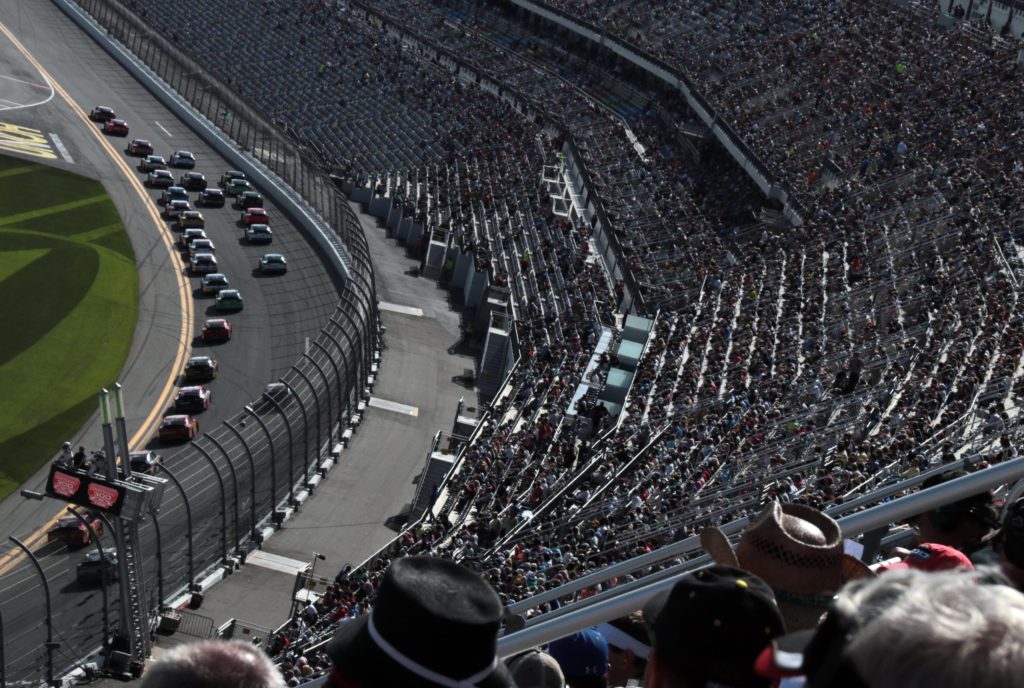
AS FOR The 500 itself, what can be said? A race that NASCAR itself will love if only for the fact that it was the on-track rivalries that were the big talking point afterwards, rather than official decisions or controversies.
There’s also the fact that it was proof that the sport has a positive future in their young drivers, despite the then-recent retirements of superstars like Jeff Gordon, Tony Stewart and, of course, Dale Jr.
Certainly, the loudest roar of the race came when young Chase Elliot – the son of NASCAR legend Bill – hit the lead for the first time.
And like the option for overtime – which works in ball sports, so why not racing – the finish of the race itself will probably piss the motor racing purists off thanks to Austin Dillon wrecking (that’s Americana for crashing out) Aric Almirola in turn three to win the race. In any other series he would have been penalised, disqualified and hauled before the stewards.
Instead, he won one of the most coveted trophies in the sport, more than a million bucks and was quoted afterwards suggesting that if Almirola returning the favour at the next ‘plate race would make him feel better then he was welcome to try.
For his part, Almirola said afterwards that while he was upset about being wrecked, his anger stemmed from not being able to win the race – not so much from Dillon’s actions. ‘We were racing for the Daytona 500’ he said.
Fair point.
There is a lot motorsport can learn from that. You don’t want people shunting other people off intentionally.. But sometimes ‘fair bump, play on’ really can be a thing.
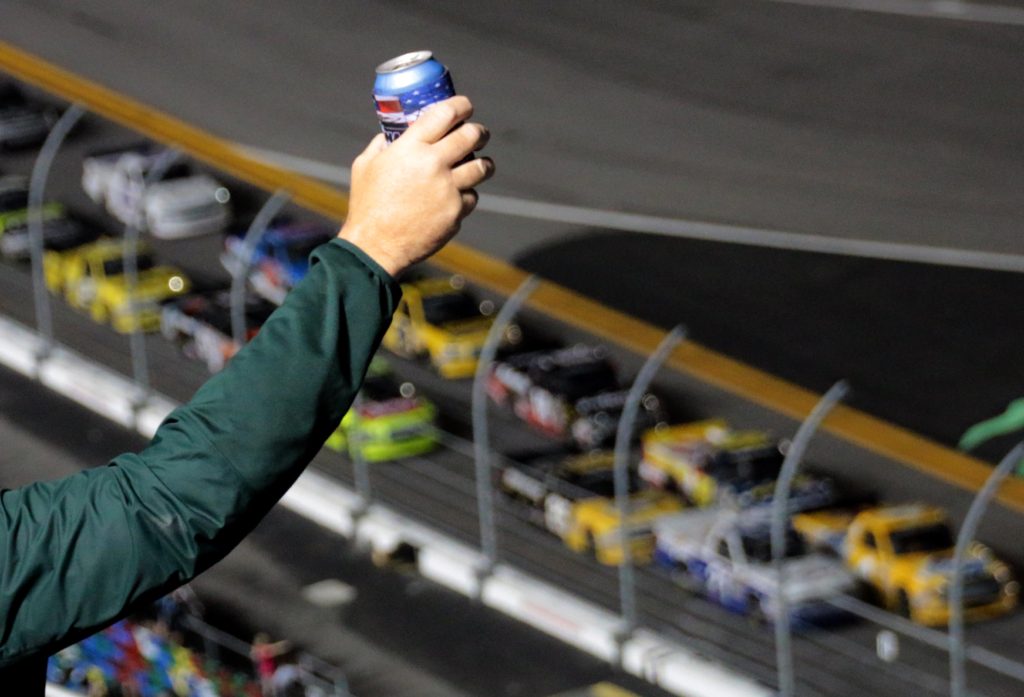
THE sight of 40 NASCARs pounding around the Super speedway in the draft is breathtaking, captivating and like most racing in the ‘States, a raw attack on the sensory experience.
While the excellent TV angles perhaps showcases more of the cars moving around, live you get the broader picture – it’s like watching a footy game live and seeing the play unfold behind the ball; the contests and rivalries behind the scenes before they actually become involved in the run of the play itself.
Watching a car at the back of the drafting pack get a massive run and then watching potential drafting partners decide whether to join in is fascinating – and then watching a third lane appear in the middle of an already tightly bunched pack borders on the ridiculous.
So too is the effort from those who get a ‘clear lead’ to retain it. Watching the field thunder through the tri-oval only for the leader to dramatically shift lanes from the bottom to the top to cover off an upcoming freight train of NASCARs behind him seems downright dangerous but it is part and parcel of restrictor plate racing.

THERE is a lot we could learn from NASCAR down under.
The fan access is special. We’ll never recreate the stadium experience that an oval track can provide, but the fan-friendly midway, more merchandise outlets than you can visit in a single day and remarkable brand activation from key series and team sponsors make for plenty to do at the venue – especially given there’s no support racing.
An infield pass gets you access to the track itself before the race, tens of thousands of people pouring into the grass infield and the circuit itself to see the pre-race concert and driver introductions. A Daytona tradition is to get on the track and sign it (The Race Torque admits to some self-promotion in this department) before the race starts.
It’s not a particularly significant thing however it creates a feeling of engagement amongst the punters – all for the cost of absolutely nothing – in fact, it makes the track money.
In Australia you pay for the nose to get behind the pit building to see the transporters, the back of the pit walling in the garages and the occasional glimpse of a driver. The occasional pit walk gets you in front of the cars but it’s still not the same.
At Daytona you get to sit on the banking, chill out on the grass, sign the walls and connect with the venue you’ve paid money to be at and for us, that’s a clear winner.
For a lot of fans, racing circuits are held in the same status as their favourite football ground – they’re a holy place to which access is restricted.
Certainly, touching the Daytona banking on the start finish line, where 60 years of history has been made, creates a connection to place that just sitting in the grandstand can not achieve.
It would not be hard to do in Australia.
We should mention, the facility is immaculate as well. It’s well signed. The five enormous ‘injector’ areas into the stadium are large activation spaces for major sponsors of the Speedway, yes, but allow for easy access into the main concourse.
We should at this time also mention the enormous grassed area on the infield, which was spectacularly adorned with a silhouette of the General Motors Firebird prototype that adorns the top of the Harley J. Earl trophy that the Daytona 500 winner receives.
Such is the level of detail involved, that where some sports stadiums merely mow patterns into the grass, Daytona grows two types of it – one lighter and coarser and one darker and thicker – to achieve their desired effect.
It looks as effective from ground level as it does from above and must have taken weeks to manicure to perfection for the eyes of the world.
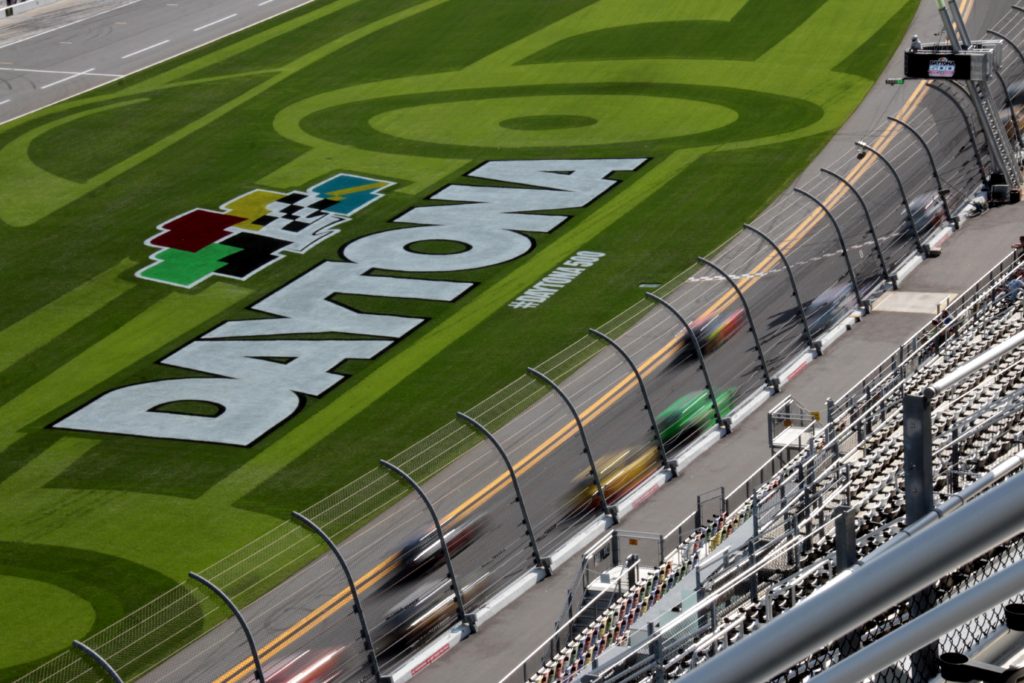
THEN there’s the access during the racing itself. 70 per cent of the crowd rocked scanners to listen into the pit-to-car radio communication and it greatly enhances the experience.
Early in the race we listened to Clint Bowyer, mainly because he’s a funny guy and tends to speak his mind and his conversations with his spotter were bang on what we expected.
“These guys are fucking nuts,” was one such comment. Apt, it was.
Some spotters didn’t say much. Some – like Joey Logano’s – gave information about what was happening five cars back and gave more information about how the race was playing out than some broadcasters do.
On that, while the commentary was okay, the Public-Address system was incredible and the big screens enormous, vast and numerous. The seats were comfortable, and each had their own cupholder. You could bring a soft cooler and your own Beer to the venue, saving you significant money if you wanted a drink.
Try doing that in Australia.
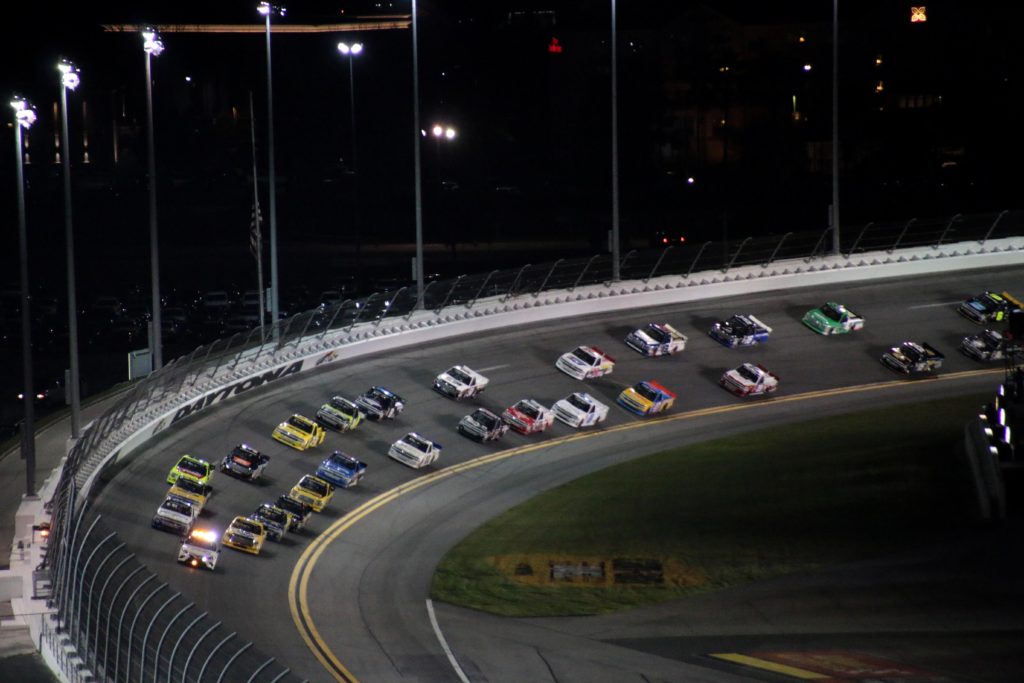
NASCAR racing is a theatre show and they make no bones about the fact that is just so.
Some motor sport purists bemoan the cars, the artificial nature of the racing – be they stages or ‘competition yellows’ or the hyped nature of the coverage around the sport.
But there is a place for that in the sport in the same way that there remains a place for the cerebral nature of something like Formula One.
Almost every single thing NASCAR do, rightly or wrongly, is geared towards making the fan experience better and the on-track product more competitive.
Like everything in life, some times they succeed and some times they do not.
However, as NASCAR undergoes significant change over the next few years amidst a changing (and diminishing) media market and with drivers people are still getting to know, it needs all the show it can get.
It needs to do more to attract people to the venues because it is there where the sport truly shines as a sporting contest and as a sporting spectacle.
In some people’s opinion, spectacle has been lacking from some elements of the sport in recent years.
However on the vast, high banks of Daytona International Speedway – as the sun sets on a warm Floridian evening and 40 cars thunder around three-wide at more than 320kph, inches apart – spectacle is exactly what comes to mind.
It was loud and visceral and exciting and dramatic and utterly compelling.
As all motor racing should aspire to be.







